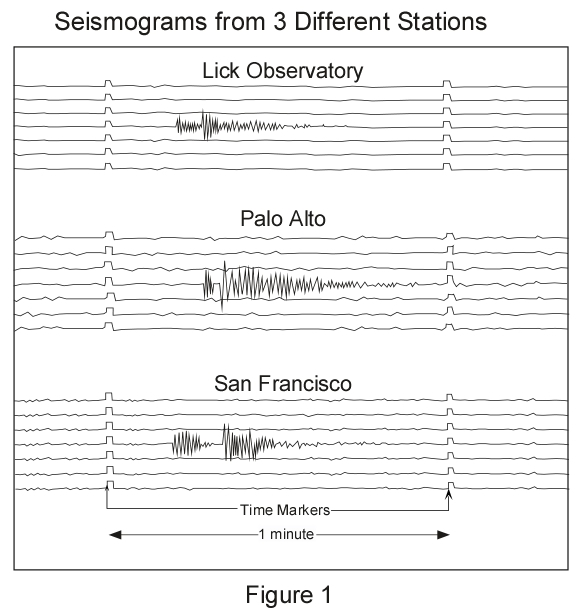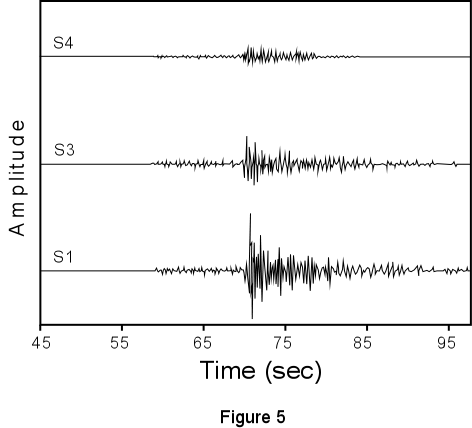- 50 Plymouth Av (Single Family Wood Frame 2 story house built after 1940)*
Located near the intersection of Plymouth Ave. and Surrey Ave.
- 75 Avon Av (Unreinforced Masonry 2 story house). Located near the intersection between Avon Ave. and Escalon Drive.
- 5 Catalpa Ave. (Single Family Wood Frame 2 story house built before 1939). Located near the intersection of Catalpa Ave. and Blithedale Ave.
*Note that this exercise is hypothetical. The
actual existence of houses at these addresses is not known with
certainty, nor are the construction characteristics at any of these
houses known. Any resemblance to actual houses or addresses is
purely coincidental and is unintended.
You should use the interactive liquefaction maps and
shaking maps to first determine the susceptibility of each of these homes
to liquefaction and shaking during a worst case scenario earthquake. Proceed as follows:
First, click on the Liquefaction link under "Earthquake-Related Hazards on the ABAG Earthquake and Hazards Program web page. Then click on the Liquefaction Susceptibility Map (the third map down from the top) on the page
that opens, . This will open
the interactive liquefaction map. On the map you can use the scroll wheel on your mouse to zoom in and zoom out, and you can hold down the left mouse button and move the mouse to move back and forth and up and down on the map. As you zoom in to Mill Valley, (In Marin County, north of San Francisco between Sausalito and Corte Madera), you will start to see more detail, including streets and street names. The map is color coded for Liquefaction Susceptibility as shown in the Legend. You should be able to locate each of the homes listed above by finding the street intersections as listed above. You could also use Google Maps to find the exact locations of each of the homes. For each of the three properties, determine the Liquefaction Susceptibility and record the information for later use.
Next, go back to the main ABAG Earthquake Hazards page and click on Shaking under Earthquake-Related Hazards.
Then click on the Earthquake Shaking Potential map (second one down).Once the map loads, you can zoom in and scroll around the map to find the addresses of the same three properties. The Legend shows a color code for shaking potential. The colors represent Modified Mercalli Intensity (MMI) values, with the top (dark brown color representing a MMI value of X, the lighter brown IX, red VIII, dark orange VII, etc. For each of the homes, determine the MMI values.
Note that you do not need to print any of these maps for this part of the homework exercise.
Answer the following questions -
- For each property, what is the Liquefaction Susceptibility and the
Modified Mercalli Intensity (MMI)
value for an earthquake a large earthquake that could affect this area? (3 points)
- From your acquired knowledge of the relationships between shaking
intensity, liquefaction, and the type of geologic material underlying an area,
make an educated guess about the topography and materials that underlie
each of the three properties (3 points).
Before you use the answers to the above questions to decide which
property you will accept from Denyallclaims, you should consider the type
of construction involved in each of the houses.
To determine the effects of construction type during
the shaking of the worst case scenario earthquake, go to the following ABAG web page - http://quake.abag.ca.gov/wp-content/documents/2010-On-Shaky-Ground.pdf Once this PDF file opens, go to Page 6 and read about SHAKING INTENSITY AND BUILDING DAMAGE. As you scroll
down, you will see pictures of various types of construction damaged in
other earthquakes., then look at Table 1 on page 8. From the
information you obtained above on MMI values knowledge of the construction type for each address, answer the following question:
- Which property would you accept from Denyallclaims based on all of the
information available and your desire to have the safest and least
earthquake susceptible house available, keeping in mind that Table I does not say
anything about possible damage that may result from liquefaction (recall that liquefaction may cause damage to the foundation of the home)?
Discuss the reasoning used to obtain your answer. (3
points)




